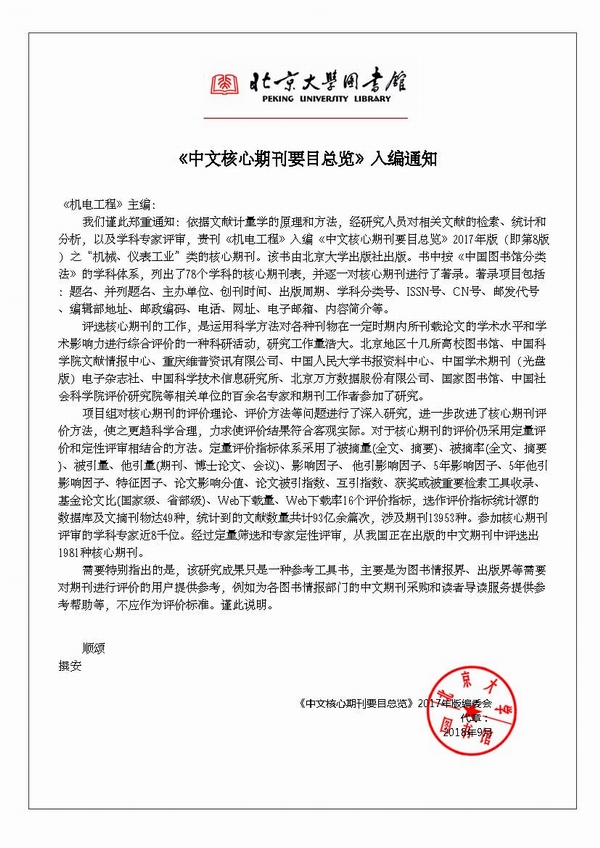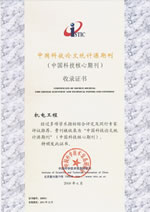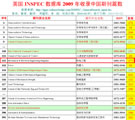
Founded in 1971 >
Chinese Sci-tech Core Periodicals >
British Science Abstracts (SA, INSPEC) Indexed Journals >
United States, Cambridge Scientific Abstract: Technology (CSA: T) Indexed Journals >
United States, Ulrich's Periodicals Directory(UPD)Indexed Journals >
United States, Cambridge Scientific Abstract: Natural Science (CSA: NS) Indexed Journals >
Poland ,Index of Copernicus(IC) Indexed Journals >
International Standard Serial Number:
ISSN 1001-4551
Sponsor:
Zhejiang University;
Zhejiang Machinery and Electrical Group
Edited by:
Editorial of Journal of Mechanical & Electrical Engineering
Chief Editor:
ZHAO Qun
Vice Chief Editor:
TANG ren-zhong,
LUO Xiang-yang
Tel:
86-571-87041360,87239525
Fax:
86-571-87239571
Add:
No.9 Gaoguannong,Daxue Road,Hangzhou,China
P.C:
310009
E-mail:
meem_contribute@163.com
Abstract: In order to solve the problem that the temperature of the working water rose due to the slip loss and hydraulic loss during the use of the hydraulic coupling, which affected the working performance of the hydraulic coupling, the heat transfer characteristics of the valve controlled liquid filled hydraulic coupling were studied. Firstly, the transient heat transfer calculation model with double cavity flow passage at the inlet and outlet was constructed.The grid independence of the model was verified. Then, the flow and heat transfer under normal operation, locked rotor and circulating water exchange conditions were numerically simulated by using multistep solution method. Finally, the temperature field distribution characteristics under different conditions were compared and analyzed, and the change law of flow and heat transfer in the internal flow field was verified. The results show that the overall temperature of the flow field under normal and locked rotor conditions is obviously linear. When circulating the water at 240 L/min, the temperature of the flow field decreases first quickly and then slowly. The temperature of the flow field can be reduced to about 30℃ within 20 s. The research results can accurately predict the temperature change of the flow field in the hydraulic coupling, and provide an important theoretical reference for the optimization of the hydraulic coupling and the regulation of water change.
Key words: hydrodynamic power transmission; slip loss and hydraulic loss; transient heat transfer; flow field characteristics; computational fluid dynamics(CFD); temperature field distribution characteristics








